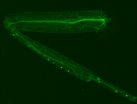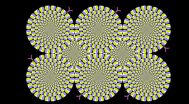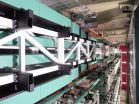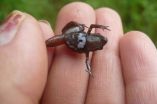Paleo diet: Big brains needed carbs
The importance of dietary carbohydrate in human evolution
2015-08-06
(Press-News.org) Understanding how and why we evolved such large brains is one of the most puzzling issues in the study of human evolution. It is widely accepted that brain size increase is partly linked to changes in diet over the last 3 million years, and increases in meat consumption and the development of cooking have received particular attention from the scientific community. In a new study published in The Quarterly Review of Biology, http://www.jstor.org/stable/10.1086/682587, Dr. Karen Hardy and her team bring together archaeological, anthropological, genetic, physiological and anatomical data to argue that carbohydrate consumption, particularly in the form of starch, was critical for the accelerated expansion of the human brain over the last million years, and coevolved both with copy number variation of the salivary amylase genes and controlled fire use for cooking.
With global increase in obesity and diet-related metabolic diseases, interest has intensified in ancestral or 'Palaeolithic' diets, not least because - to a first order of approximation - human physiology should be optimized for the nutritional profiles we have experienced during our evolution. Up until now, there has been a heavy focus on the role of animal protein and cooking in the development of the human brain over the last 2 million years, and the importance of carbohydrate, particular in form of starch-rich plant foods, has been largely overlooked.
Hardy's team highlights the following observations to build a case for dietary carbohydrate being essential for the evolution of modern big-brained humans:
(1) The human brain uses up to 25% of the body's energy budget and up to 60% of blood glucose. While synthesis of glucose from other sources is possible, it is not the most efficient way, and these high glucose demands are unlikely to have been met on a low carbohydrate diet;
(2) Human pregnancy and lactation place additional demands on the body's glucose budget and low maternal blood glucose levels compromise the health of both the mother and her offspring;
(3) Starches would have been readily available to ancestral human populations in the form of tubers, as well as in seeds and some fruits and nuts;
(4) While raw starches are often only poorly digested in humans, when cooked they lose their crystalline structure and become far more easily digested;
(5) Salivary amylase genes are usually present in many copies (average ~6) in humans, but in only 2 copies in other primates. This increases the amount of salivary amylase produced and so increases the ability to digest starch. The exact date when salivary amylase genes multiplied remains uncertain, but genetic evidence suggests it was at some point in the last 1 million years.
Hardy proposes that after cooking became widespread, the co-evolution of cooking and higher copy number of the salivary amylase (and possibly pancreatic amylase) genes increased the availability of pre-formed dietary glucose to the brain and fetus, which in turn, permitted the acceleration in brain size increase which occurred from around 800,000 years ago onwards.
Eating meat may have kick-started the evolution of bigger brains, but cooked starchy foods together with more salivary amylase genes made us smarter still.
INFORMATION:
Karen Hardy, Jennie Brand Miller, Katherine D. Brown, Mark G. Thomas, and Les Copeland. "The Importance of Dietary Carbohydrate in Human Evolution." The Quarterly Review of Biology: September 2015.
For further information contact:
Karen Hardy for the overall context of the study +44 780 976 6164, khardy@icrea.cat or karhardy2@googlemail.com
Mark Thomas for questions related to genetics, +44 020 7679 2286, m.thomas@ucl.ac.uk
Jennie Brand Miller for questions related to nutrition and pregnancy, +61 2 9351 3759, jennie.brandmiller@sydney.edu.au Les Copeland for questions related to starchy foods and carbohydrates, +61 2 8627 1017 les.copeland@sydney.edu.au
The Quarterly Review of Biology (http://journals.uchicago.edu/QRB), the premier review journal in biology, has presented insightful historical, philosophical, and technical treatments of important biological topics since 1926. The QRB publishes outstanding review articles of generous length that are guided by an expansive, inclusive, and often humanistic understanding of biology. Beyond the core biological sciences, the QRB is also an important review journal for scholars in related areas, including policy studies and the history and philosophy of science. Published by the University of Chicago Press.
ELSE PRESS RELEASES FROM THIS DATE:
2015-08-06
Researchers at the Babraham Institute and University of Massachusetts Medical School in the United States have developed a new model to study motor neuron degeneration and have used this to identify three genes involved in the neurodegeneration process. These findings could have relevance for understanding the progression of amyotrophic lateral sclerosis (ALS) and other forms of motor neuron disease (MND). ALS is the most common form of adult-onset motor neuron disease and kills over 1,200 people a year in the UK.
The researchers developed a new model to study neurodegeneration ...
2015-08-06
Greenhouse gasses (GHG) emission savings due to final renewable energy consumption in electricity, cooling/heating and transport sectors rose at a compound annual growth rate of 8.8% from 2009 to 2012, confirming the renewables' great potential in climate change mitigation, according to a new JRC report. Nearly two thirds of the total savings came thanks to renewable energy development in Germany, Sweden, France, Italy and Spain.
The report assesses data on the use of renewable energy, submitted by EU Member States every two years, as required by EU legislation on renewable ...
2015-08-06
TORONTO -- Despite the growing use of online support groups such as those on Facebook to help curb substance abuse, attending traditional face-to-face meetings may continue to be more effective for people trying to maintain sobriety, according to research presented at the American Psychological Association's 123rd Annual Convention.
"One of the most hotly debated media issues today is whether our rapidly increasing use of social networking might be supplanting face-to-face-interactions and, if so, what the social consequences might prove for us as a culture," said Donald ...
2015-08-06
JAMA Oncology will publish two studies, a commentary and an author audio interview examining outcomes in women with breast cancer who had breast-conserving surgery and were treated with hypofractionated radiation therapy (shorter courses of radiation treatment administered in larger daily fraction sizes) compared with longer courses of conventionally fractionated radiation therapy.
In the first article, Benjamin D. Smith, M.D., of the University of Texas MD Anderson Cancer Center, Houston1, and coauthors conducted a randomized clinical trial of 287 women to assess the ...
2015-08-06
In an analysis that included a representative sample of the South Korean population, a lower blood manganese level and higher blood mercury level were associated with greater odds of a glaucoma diagnosis, according to a study published online by JAMA Ophthalmology.
Glaucoma is the leading cause of irreversible blindness worldwide and a growing public health concern because of an aging global population. Abnormal body levels of essential elements and exposure to toxic trace metals have been postulated to contribute to the pathogenesis of diseases affecting many organ ...
2015-08-06
WASHINGTON, Aug. 6, 2015 -- Optical illusions are deceptive and mind-boggling. What's going on inside our heads when we see things that appear to be moving but aren't, and when we view other, similar visual tricks? In this collaboration between the American Chemical Society and Inside Science TV, we explain how optical illusions work, so you can understand the science behind the trickery. Check it out here: https://www.youtube.com/watch?v=VYIr40D7wNw.
Inside Science TV is a production of the American Institute of Physics. See more videos in the series on the ISTV YouTube ...
2015-08-06
Enhancement of the Petawatt laser "LFEX" [1] up to 2,000 trillion watts for one trillionth of one second.
High power output implemented by a 4-beam amplifier technology and the world's highest performance dielectric multilayer diffraction grating of large diameter [2].
Big step forward for creating such new fundamental technologies as cancer therapy for medical applications and non-destructive inspection of bridges and buildings, to contribute to our future life of longevity, safety, and security, and for the realization of fast ignition as an energy resource.
The ...
2015-08-06
The results of their research have recently been published in the high-profile journal eLife*.
The ability of most cardiac muscle cells to reproduce disappears in humans and all other mammals shortly after birth. What remains unclear, however, is how this happens and whether it is possible to restore this ability and therefore to regenerate the heart.
FAU researchers Dr. David Zebrowski and Prof. Dr. Felix B. Engel from the Department of Nephropathology at Universitätsklinikum Erlangen's Institute of Pathology and their colleagues have now found a possible explanation ...
2015-08-06
Carrying itself around with a dark brown mask on its face and a broad shapeless white mark on its chest and belly, a frog had been jumping across the Peruvian cloud forests of the Andes unrecognised by the scientific world. Now, this visibly distinguishable species has been picked up by Dr. Catenazzi of Southern Illinois University and his team from its likely only locality, a cloud forest near Cusco in Peru, at 2350 m elevation by Drs. Catenazzi, Uscapi and May. Their research is published in the open-access journal ZooKeys.
The new fleshbelly frog species, called N. ...
2015-08-06
Researchers from the International Research Institute of Disaster Science (IRIDeS) at Tohoku University in Sendai, Japan, have been looking into how tsunami-type waves can originate from massive storm systems, independent of earthquakes or landslides.
According to Volker Roeber and Jeremy D. Bricker, massive storm systems can be the cause of devastating tsunami-type waves. It happened during Typhoon Haiyan, which struck the Philippines in November 2013. Typhoon Haiyan was one of the strongest typhoons ever recorded, causing more than 6,000 casualties.
A development ...
LAST 30 PRESS RELEASES:
[Press-News.org] Paleo diet: Big brains needed carbs
The importance of dietary carbohydrate in human evolution




